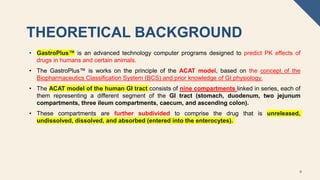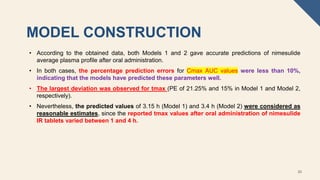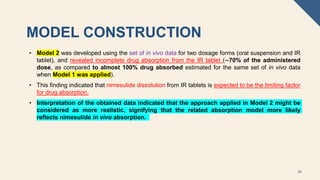This document discusses gastrointestinal absorption simulation presented by Arzoo Sekhani. It provides background on in silico gastrointestinal absorption modeling using the Advanced Compartmental Absorption and Transit (ACAT) model in GastroPlus software. The theoretical background section describes the processes considered in the ACAT model, including drug transit, dissolution, absorption and metabolism in GI tract compartments. The model construction section discusses parameter selection and optimization to simulate nimesulide absorption, comparing two models based on different assumptions about nimesulide transporter interactions and solubility. Simulation results from both models were compared to clinical data to identify the most accurate model.

































